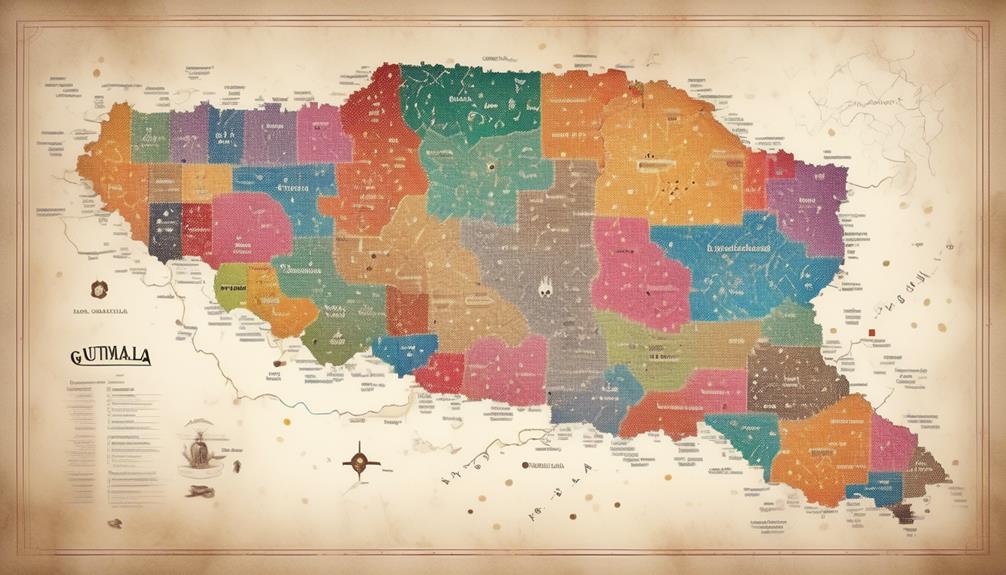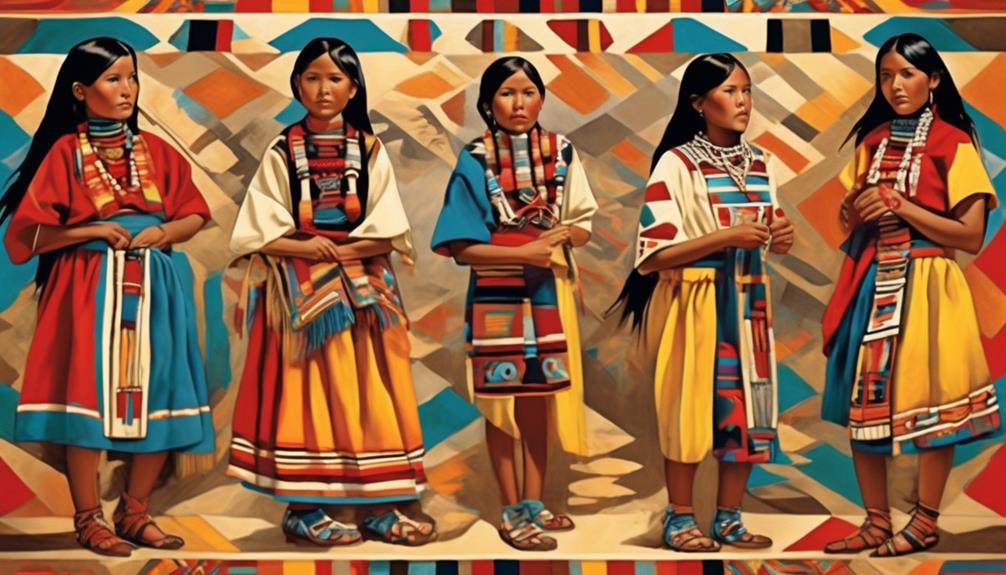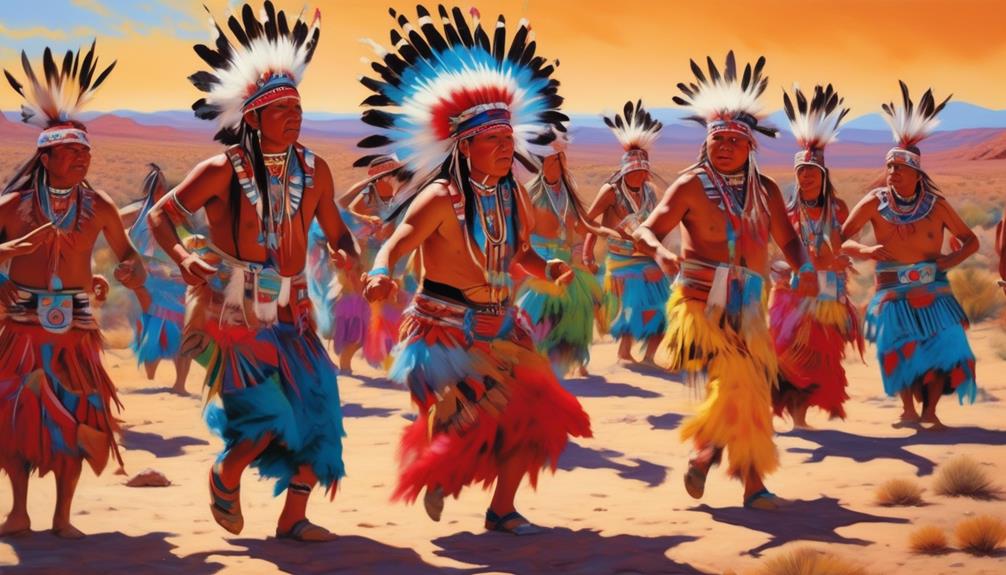Have you ever thought about where the Hopi Tribe is situated? You might be surprised to find out that the Hopi Tribe is located in northeastern Arizona, USA.
But there's more to this fascinating tribe than just their geographical location. As we explore the history, traditional villages, cultural practices, and contemporary challenges of the Hopi Tribe, you'll gain a deeper understanding of their rich heritage and the unique way of life that continues to thrive to this day.
Key Takeaways
- The Hopi Tribe is located in northeastern Arizona, USA, on a reservation spanning over 1.5 million acres.
- The Hopi Tribe has a long history and cultural significance, being one of the oldest living cultures in documented history and preserving ancient traditions and religious ceremonies.
- The Hopi Tribe's traditional villages, such as Walpi, Oraibi, and Hotevilla, reflect their deep spiritual significance and are organized around central plazas.
- The Hopi Tribe faces challenges in preserving their language, balancing traditional practices with modern economic opportunities, preserving sacred sites and artifacts, and making modern adaptations while maintaining their cultural identity.
History of the Hopi Tribe
The history of the Hopi Tribe is a rich tapestry of ancient traditions, enduring resilience, and cultural preservation. The Hopi people have inhabited the same area in northeastern Arizona for over a thousand years, making them one of the oldest living cultures in documented history.
Central to their heritage are the ancient traditions and religious ceremonies that have been passed down through generations. These ceremonies form the cornerstone of the Hopi way of life, connecting them to their ancestors and the spiritual world. The Hopi have managed to preserve these customs despite centuries of outside influences and attempts to suppress their practices. Their commitment to maintaining these rituals reflects their deep-rooted cultural resilience in the face of adversity.
The ancient traditions of the Hopi Tribe aren't merely historical relics but are actively woven into the fabric of their daily lives. The religious ceremonies, such as the Kachina dances and the Snake Dance, continue to be performed as essential components of their spiritual and communal practices. These ceremonies serve as a bridge between the physical and spiritual realms, embodying the Hopi worldview and their reverence for the natural world.
It's through these enduring traditions that the Hopi people continue to uphold their cultural identity and spiritual connection to their land.
Geographical Location and Landscape
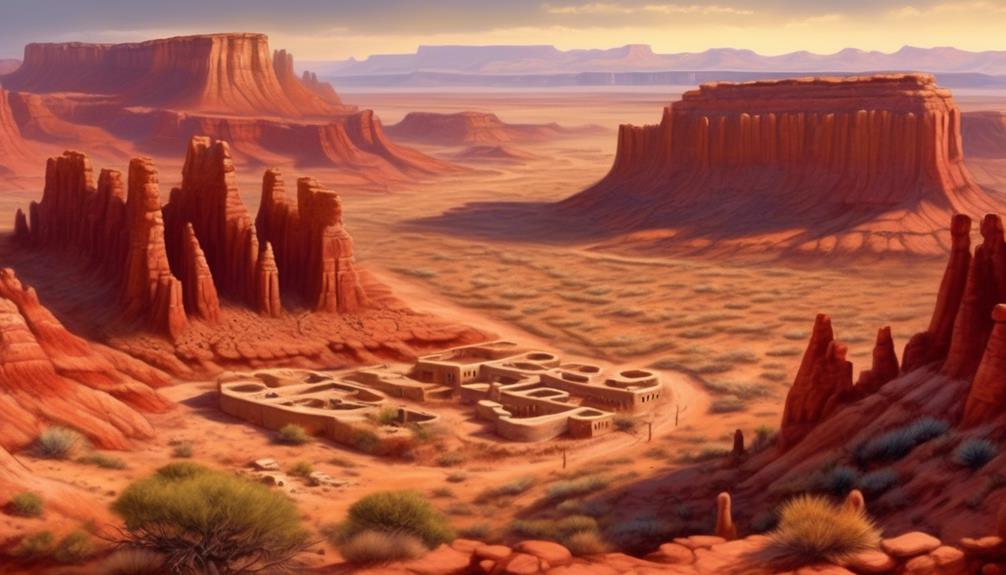
Nestled within the northeastern region of Arizona, the Hopi Tribe's geographical location and landscape play a vital role in shaping their cultural practices and spiritual connection to their land. The Hopi reservation spans over 1.5 million acres and is characterized by its unique geographical features and natural resources, which have sustained the tribe for generations.
Here are three key aspects that define the Hopi Tribe's geographical location and landscape:
- Mesas: The Hopi reservation is dominated by a series of ancient mesas, flat-topped hills that rise abruptly from the surrounding plains. These mesas hold immense cultural and spiritual significance for the Hopi people, serving as the sites of their traditional villages and religious ceremonies.
- Arid Terrain: The region's arid terrain presents both challenges and opportunities for the Hopi Tribe. While the scarcity of water and limited arable land pose significant obstacles, the Hopi have developed sophisticated agricultural techniques, such as dry farming and the use of earthen dams, to sustain their agricultural practices.
- Rich Natural Resources: Despite the arid environment, the Hopi reservation is rich in natural resources, including coal, sandstone, and clay. These resources have historically supported the tribe's traditional crafts, such as pottery and basket weaving, and continue to play a vital role in the Hopi economy and cultural traditions.
Traditional Hopi Villages
Set amidst the striking mesas and arid terrain of northeastern Arizona, traditional Hopi villages serve as the heart of the tribe's cultural heritage and communal life. The villages are characterized by their traditional architecture, which reflects the Hopi people's deep connection to their land and their history. The villages are organized around a central plaza, with multi-story adobe houses constructed from local materials such as sandstone and clay. The architecture is not only functional but also holds deep spiritual significance, with each village being associated with specific ceremonies and religious practices.
| Traditional Hopi Villages | Location | Architectural Style | Agricultural Practices |
|---|---|---|---|
| Walpi | First Mesa | Multi-story adobe houses | Dry farming |
| Oraibi | Third Mesa | Compact layout with terraced buildings | Maize, beans, squash cultivation |
| Hotevilla | Third Mesa | Labyrinthine layout with underground kivas | Terrace farming and water conservation techniques |
Agricultural practices are also central to the traditional Hopi way of life. The villages are surrounded by terraced fields, where the Hopi people practice dry farming and terrace farming, cultivating crops such as maize, beans, and squash. These agricultural practices are deeply intertwined with the Hopi's cultural and spiritual beliefs, emphasizing the vital connection between the people, the land, and their traditions.
Cultural Practices and Beliefs
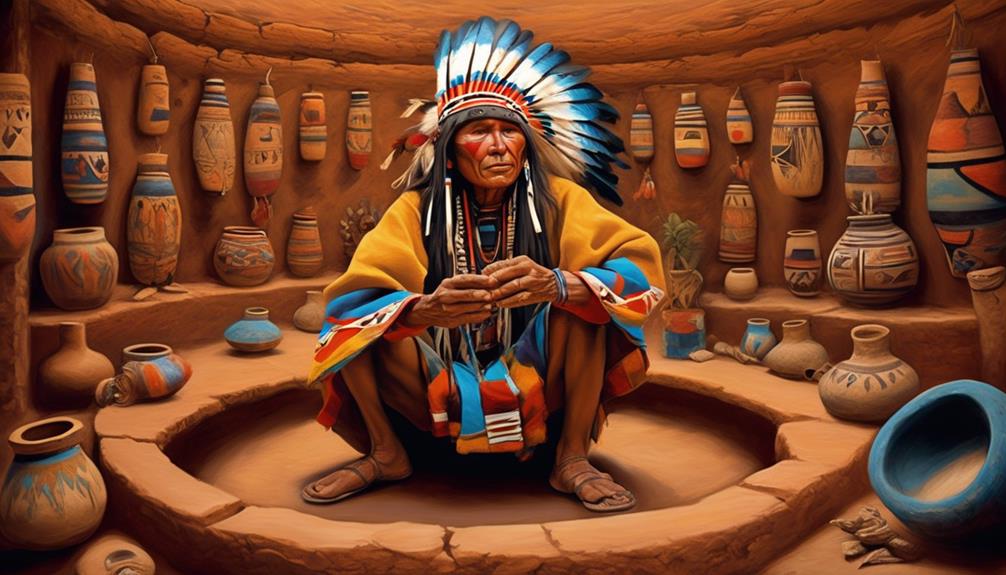
Deeply ingrained in the fabric of Hopi society are the rich cultural practices and beliefs that shape the tribe's way of life. These customs and ceremonies are integral to our spirituality, connecting us to our ancestors and the land. The Hopi people have a deep reverence for agriculture, particularly maize cultivation, which isn't just a means of sustenance but also a sacred practice intertwined with our spiritual beliefs.
Katsina Dolls: These intricately carved figurines play a significant role in our ceremonies and are believed to embody the spirits of deities, serving as messengers between the spiritual and physical realms.
Clan System: Our society is organized into matrilineal clans, each with its own responsibilities and ceremonies, fostering a sense of communal unity and shared purpose.
Storytelling and Oral Tradition: The art of storytelling is central to preserving our culture and passing down our traditions. Through our language and oral tradition, we impart our history, values, and spiritual teachings to future generations.
Our traditional clothing, adorned with symbolic designs, also holds deep cultural significance. These facets of Hopi life intertwine to form a rich tapestry of customs and beliefs that define and sustain our unique way of life.
Contemporary Life and Challenges
Facing the complexities of modern society, the Hopi tribe continues to navigate a myriad of contemporary challenges while striving to uphold their cultural traditions and heritage. One of the key challenges faced by the Hopi tribe is the preservation of their language. With the influence of English and the younger generation's preference for it, there is a risk of the Hopi language fading. Additionally, the tribe grapples with the need for economic development while preserving their land and traditions. Balancing traditional agricultural practices with modern economic opportunities presents a constant challenge. Furthermore, the preservation of sacred sites and artifacts in the face of increasing development pressures is a significant concern for the tribe. To address these challenges, the Hopi tribe has been making modern adaptations while staying true to their cultural values. For instance, they have been engaging in ecotourism initiatives to provide economic opportunities while protecting their land and heritage. This approach allows the tribe to embrace modern economic practices while maintaining their cultural identity.
| Challenges Faced | Modern Adaptations |
|---|---|
| Language preservation | Bilingual education programs |
| Balancing tradition and | Sustainable agriculture practices |
| economic development | |
| Preservation of sacred | Ecotourism initiatives |
| sites and artifacts |
Frequently Asked Questions
What Are the Specific Challenges the Hopi Tribe Faces in Regard to Preserving Their Traditional Language and Cultural Practices?
Preserving traditions and language revitalization are critical for the Hopi Tribe's cultural sustainability. Community engagement, tribal partnerships, and environmental conservation play a key role.
However, economic impact, healthcare, and education pose challenges. The tribe's efforts to preserve its traditions and language face obstacles due to limited resources and external influences.
Addressing these challenges requires a holistic approach that involves the entire community and external support.
How Does the Hopi Tribe Address Issues of Environmental Conservation and Sustainability Within Their Community?
In addressing issues of environmental conservation and sustainability within our community, we prioritize environmental stewardship by integrating traditional ecological knowledge with modern practices.
Our approach emphasizes sustainable land use, water management, and renewable energy.
By fostering a deep connection to our natural surroundings, we aim to preserve our cultural heritage and ensure the longevity of our community sustainability.
These efforts reflect our commitment to balancing the needs of our people with the preservation of our environment.
What Are the Current Economic Opportunities Available to Members of the Hopi Tribe, and How Do They Impact Traditional Ways of Life?
Economic development on the Hopi Tribe is diverse, impacting traditional ways of life. Tribal entrepreneurship provides opportunities, akin to a blooming garden. While it brings financial stability, it also necessitates balancing modernity with cultural preservation.
Members engage in traditional crafts, intertwining heritage with contemporary markets. This duality shapes the economic landscape, influencing communal dynamics. Finding harmony in these opportunities is essential for sustaining the tribe's cultural identity amidst economic growth.
How Does the Hopi Tribe Engage With Other Native American Tribes and Communities in the Region?
Intertribal collaboration is vital to the Hopi Tribe's cultural exchange with other Native American communities in the region. This partnership fosters a rich exchange of traditions, ceremonies, and knowledge, strengthening the interconnectedness of indigenous peoples.
The Hopi Tribe actively engages with neighboring tribes to preserve and protect their shared heritage, promoting unity and solidarity. This collaboration allows for the exchange of cultural practices, language, and historical teachings, fostering a deeper understanding and respect for each other's traditions.
What Efforts Are Being Made to Address Healthcare and Education Disparities Within the Hopi Tribe?
Efforts to address healthcare disparities and education initiatives within the Hopi Tribe are crucial.
Healthcare disparities often stem from limited access to quality services and resources, while education initiatives aim to empower our community.
Collaborations with healthcare providers, educational institutions, and government agencies have been instrumental in implementing targeted programs.
These efforts reflect our commitment to improving the well-being and future prospects of our people.
Conclusion
After delving into the rich history, sacred landscapes, and enduring traditions of the Hopi Tribe, we stand in awe of their resilience and cultural heritage, like a timeless rock formation in the desert landscape.
The challenges they face today are like gusts of wind, yet their roots run deep and their spirit remains unyielding.
The Hopi Tribe's legacy is a testament to the enduring power of tradition and the human spirit.
Mary is a passionate writer who brings creativity and a fresh perspective to our team. Her words have the power to captivate and inspire, making her an essential contributor to our content. Mary’s commitment to storytelling and dedication to promoting Indigenous culture ensures that her work touches the hearts of our readers. We’re fortunate to have her as part of our team.

